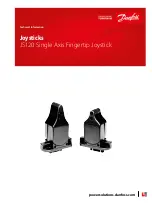
Index
I-2
ni.com
blending moves, 9-1
branching onboard programs
algorithm, 14-20
C/C++ code, 14-22
LabVIEW code, 14-21
breakpoints using RTSI, 12-39
breakpoints.
synchronization
buffers
onboard
algorithm, 14-26
data flow, 14-25
C
C/C++ code
position-based straight-line move, 5-5
velocity profiling using velocity
camming, 10-1
changing a time slice, 14-42
check reference, 8-1
circular arc move, 6-1
algorithm, 6-3
C/C++ code, 6-4
LabVIEW code, 6-4
commutation frequency, A-2
commutation, sinusoidal, A-1
commutation frequency, A-2
determining counts per electrical
phase initialization
direct set, A-2
Hall effect sensors, A-1
shake and wake, A-1
troubleshooting Hall effect sensors, A-3
conditional execution of onboard
algorithm, 14-11
C/C++ code, 14-12
LabVIEW code, 14-12
configuration
absolute versus relative, 7-4
algorithm, 7-3
C/C++ code, 7-6
data path, 7-1
LabVIEW code, 7-5
contoured moves, 7-1
control loop, 1-6, 3-2
acceleration feedforward, 3-6
derivative gain, 3-5
dual loop feedback, 3-7
Ga, 3-7
integral gain, 3-4
Kdac, 3-6
Kt, 3-7
proportional gain, 3-4
velocity feedback, 3-5, 3-9
algorithm, 3-10
velocity amplifiers, 3-10
controlling torque, 13-1
conventions used in the manual,
counts per electrical cycle, A-2
creating NI-Motion applications, 2-1
generic steps diagram, 2-2
I/O diagram, 2-3
D
data, acquiring time-sampled position and
velocity
algorithm, 11-2
C/C++ code, 11-4
data path, 11-1
LabVIEW code, 11-4
derivative gain, 3-5
diagnostic tools (NI resources), D-1
Digital to Analog Converter gain, 3-6








































